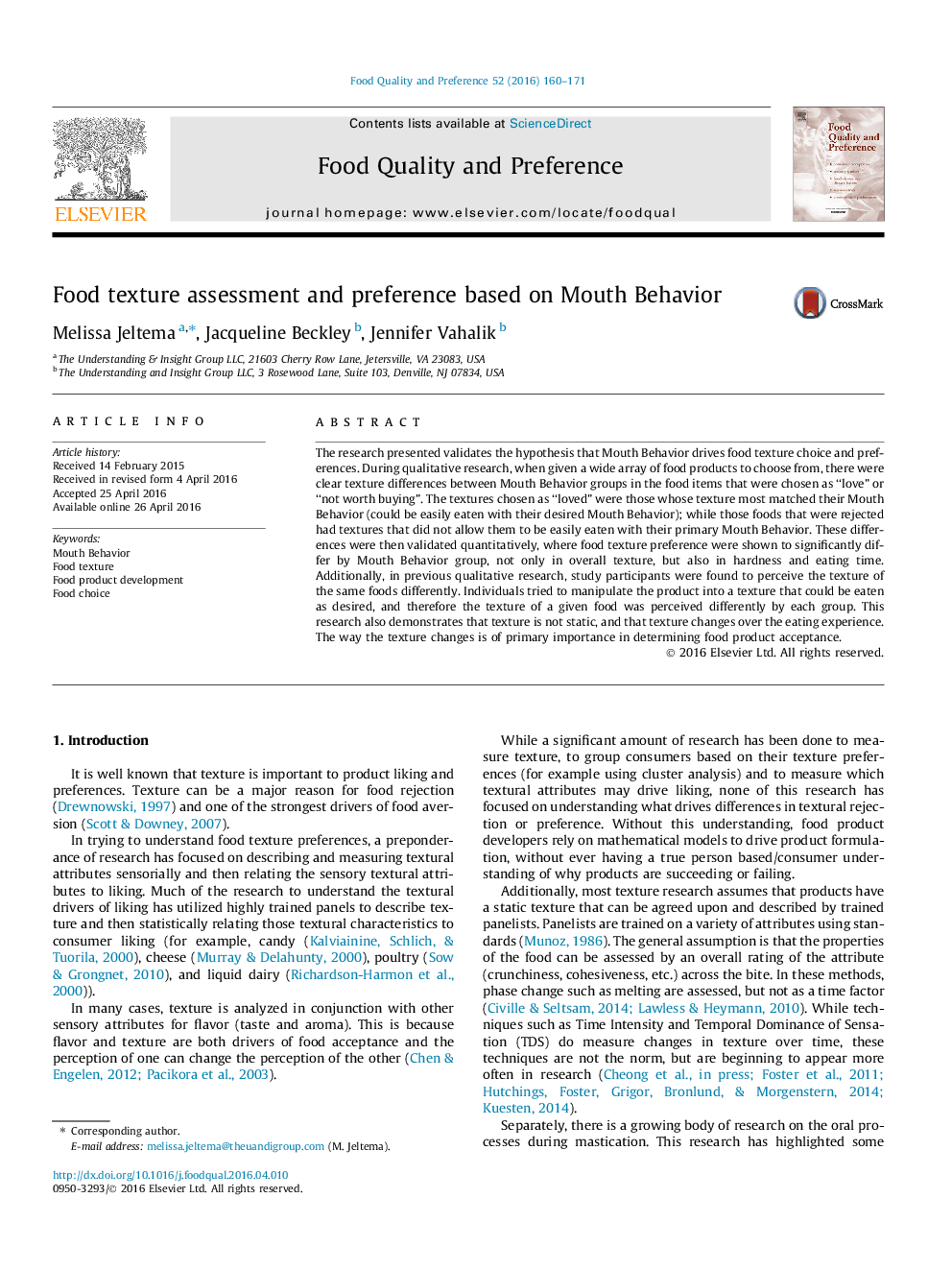| Article ID | Journal | Published Year | Pages | File Type |
|---|---|---|---|---|
| 6261049 | Food Quality and Preference | 2016 | 12 Pages |
â¢An individual's Mouth Behavior drove food product acceptance and rejection.â¢The texture of a food product was perceived differently by individuals and this perception was driven by Mouth Behavior.â¢Textural change of foods over time was important to product acceptance.
The research presented validates the hypothesis that Mouth Behavior drives food texture choice and preferences. During qualitative research, when given a wide array of food products to choose from, there were clear texture differences between Mouth Behavior groups in the food items that were chosen as “love” or “not worth buying”. The textures chosen as “loved” were those whose texture most matched their Mouth Behavior (could be easily eaten with their desired Mouth Behavior); while those foods that were rejected had textures that did not allow them to be easily eaten with their primary Mouth Behavior. These differences were then validated quantitatively, where food texture preference were shown to significantly differ by Mouth Behavior group, not only in overall texture, but also in hardness and eating time. Additionally, in previous qualitative research, study participants were found to perceive the texture of the same foods differently. Individuals tried to manipulate the product into a texture that could be eaten as desired, and therefore the texture of a given food was perceived differently by each group. This research also demonstrates that texture is not static, and that texture changes over the eating experience. The way the texture changes is of primary importance in determining food product acceptance.
